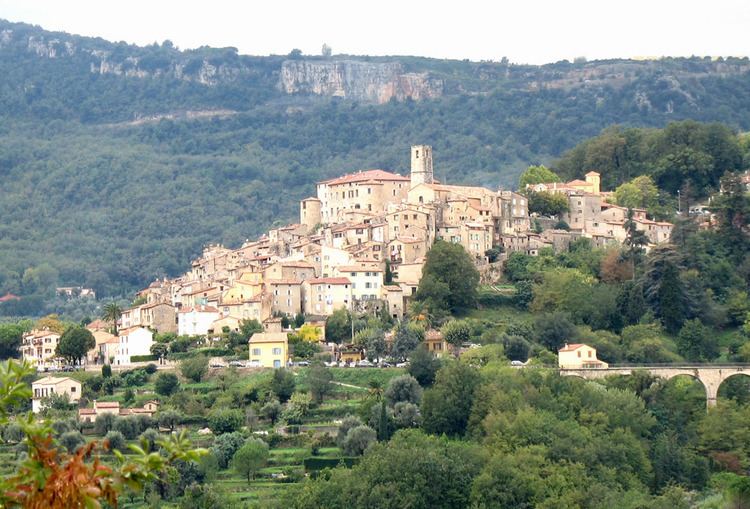Population (2008) 2,778 Local time Tuesday 3:05 AM | Intercommunality Sophia Antipolis Area 14.47 km² | |
 | ||
Weather 8°C, Wind NW at 11 km/h, 71% Humidity | ||
Le Bar-sur-Loup is a commune in the Alpes-Maritimes department in southeastern France.
Contents
- Map of Le Bar sur Loup France
- Geography
- History
- Places and monuments
- Legend
- Personalities
- Sister city
- References
Map of Le Bar-sur-Loup, France
Originally known simply as Le Bar, the commune become known as Le Bar-sur-Loup by a decree dated 27 March 1961 published in the Journal Officiel on 1 April, with effect from 2 April 1961.
Its inhabitants are known as Aubarnais - Aubarnenc in Occitan - or simply Barois.
Geography
The commune gets its name from the Loup, a coastal river that runs through it. The Loup flows into the Mediterranean near Villeneuve-Loubet.
History
Famous ruins of a viaduct are located in a village near Le Bar-sur-Loup. The viaduct was destroyed by German soldiers who occupied the village during the Second World War. Towards the end of the war, the Germans evacuated the village and blew up the viaduct. Later, la Compagnie des Grands Travaux de Marseille (a public construction company at the time) ordered the destruction of remaining parts of the viaduct that were close to collapse. On the other hand, pillars that were considered as non-dangerous were left in place, and serve as a reminder of the time for local inhabitants.
Places and monuments
Church of Saint-Jacques-le-Majeur
The carvings on the door are quite notable. On the inside, one can see an altarpiece painted by Ludovico Brea dating to the 16th century as well as statues from the 17th century. In the back of the church, there is a wood carving of a danse macabre from the 15th century.Le château des comtes de Grasse
A quadrangular building built on vaulted cellars, with two towers to the south and a smaller one to the north. The castle was sacked in 1792 and sold to the villagers in 1832. Restored, it was divided into apartments. It was the birthplace of François Joseph Paul de Grasse, Comte de Grasse and French naval general, on 13 September 1722.At the entrance to the courtyard before the castle, one can see a broad-based square tower. This is the old castle keep, now a tourist office. Before it was dismantled in 1792 it had seven storeys. A museum has been set up on the first floor which tells the stories of the village's most famous residents. The Chateau de Grasse is now a hotel.Legend
During Lent, a count in Le Bar held a party during which all the guests died. A danse macabre was painted to commemorate the divine punishment. It shows Death as an archer, firing arrows at the guests. Ghosts rise from the mouths of the corpses in the form of small, naked people, which are then weighed in a balance held by Saint Michael (sitting at the feet of Christ). The ghosts are then sent into the jaws of a monster, representing the entrance to hell.
Personalities
It was the birthplace (1722) of 18th-century Admiral François Joseph Paul de Grasse.
Sister city
Le Bar-sur-Loup has a sister city:
